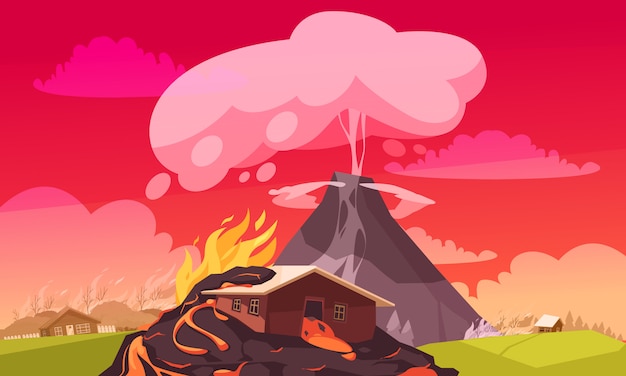Facts About Wildfires – What You Need to Know

Wildfires are a natural part of forest ecosystems.
On average, wildfires burn an area of 4.5 million acres in the United States each year.
Smokey Bear, a popular mascot, was created to educate people about preventing wildfires.
Lightning strikes are responsible for a significant number of wildfires.
Humans are responsible for starting over 80% of wildfires in the United States.
Climate change has contributed to longer and more intense wildfire seasons.
Wildfires release large amounts of carbon dioxide, contributing to greenhouse gas emissions.
Dead plant material, known as fuel, provides the perfect conditions for wildfires to spread.
Wildfires can jump rivers, roads, and even firebreaks due to flying embers.
Firefighters use various techniques, including bulldozers and backfires, to control wildfires.
Wildfires can have devastating effects on wildlife populations and their habitats.
Some plants have adapted to benefit from wildfires, such as the lodgepole pine, whose cones require the heat of a fire to open and release their seeds.
Smoke from wildfires can travel thousands of miles, affecting air quality in distant areas.
Aircraft, such as water bombers, are often utilized to drop fire retardants to help suppress wildfires.
Wildfires can cause significant economic losses, including damage to infrastructure and loss of agricultural resources.
The Great Fire of London in 1666, which destroyed a large part of the city, was one of the most famous wildfires in history.
Facts About Wildfires – What You Need to Know part 2
Wildfires can create their own weather patterns, including fire whirls and pyrocumulus clouds.
Some regions, like California, experience fire seasons that extend nearly throughout the year.
Climate change is projected to increase the frequency and severity of wildfires.
Wildfires can cause erosion and soil degradation, which can lead to long-term ecological impacts.
The largest recorded wildfire in the United States was the Great Fire of 1910, which burned about three million acres in Idaho and Montana.
Ash from wildfires contains nutrients that can replenish soil fertility when it settles.
Wildfires can lead to an increased risk of mudslides and flash flooding during heavy rains.
Firebreaks, cleared areas with no flammable material, are created to prevent wildfires from spreading.
Wildfires can travel faster uphill due to the increased availability of oxygen.
Indigenous communities have used controlled burns as a land management tool for centuries to prevent catastrophic wildfires.
Wildlife species that are well-adapted to fire, like certain bird species, may benefit from post-fire habitat conditions.
Smoke from wildfires can pose serious health risks, particularly for people with respiratory issues.
Wildfires can produce intense heat, often reaching temperatures of over 1,400 degrees Fahrenheit (760 degrees Celsius).
Fire tornadoes, also known as firenadoes, are rare but can occur during extreme wildfires.
Some plants, like the eucalyptus tree, have adaptations that promote the spread of fire, as their leaves are highly flammable.
Controlled burns, when conducted properly, can help prevent more destructive and unmanageable wildfires.
Wildfires are a major concern for national parks and other protected areas, as they can threaten fragile ecosystems.
Smokejumpers, highly trained firefighters, parachute into remote areas to fight wildfires.
The term wildfire comes from the Old English word wiltēar, meaning willow and blaze.
Wildfires can lead to the displacement of communities and the loss of homes and livelihoods.
Australia experiences some of the most severe wildfires, with the Black Saturday bushfires in 2009 being one of the deadliest in the country’s history.
Wildfires can cause power outages and damage electrical infrastructure.
The increased accumulation of dead trees in forests, due to factors like insect infestations, has contributed to a greater risk of wildfires in some areas.
Wildfire smoke can have a negative impact on air travel, leading to canceled or delayed flights.
Rapid response is crucial in containing wildfires, as they can double in size within minutes under favorable conditions.
Wildlife rescue efforts are often required after major wildfires, as many animals flee or are injured during the events.
In some Native American cultures, fire is considered a cleansing and rejuvenating force, and controlled burns play a vital role in keeping ecosystems healthy.
Natural fire-resistant barriers, such as rivers or rocky terrain, can help prevent the spread of wildfires.
Effective public education campaigns about preventing wildfires have led to a decrease in accidental fire starts in recent years.

